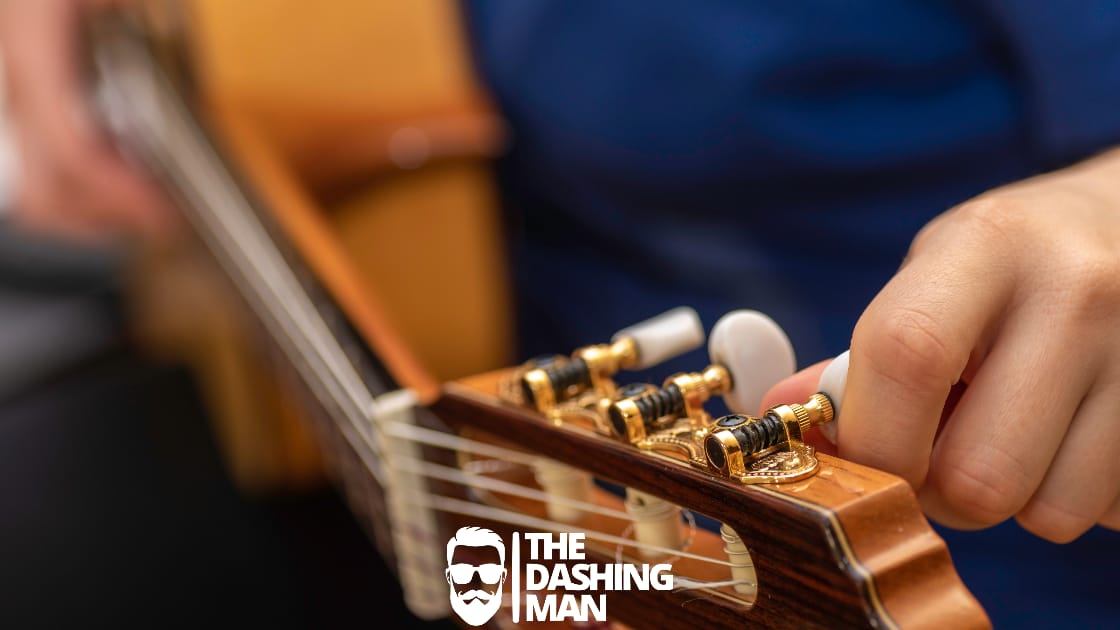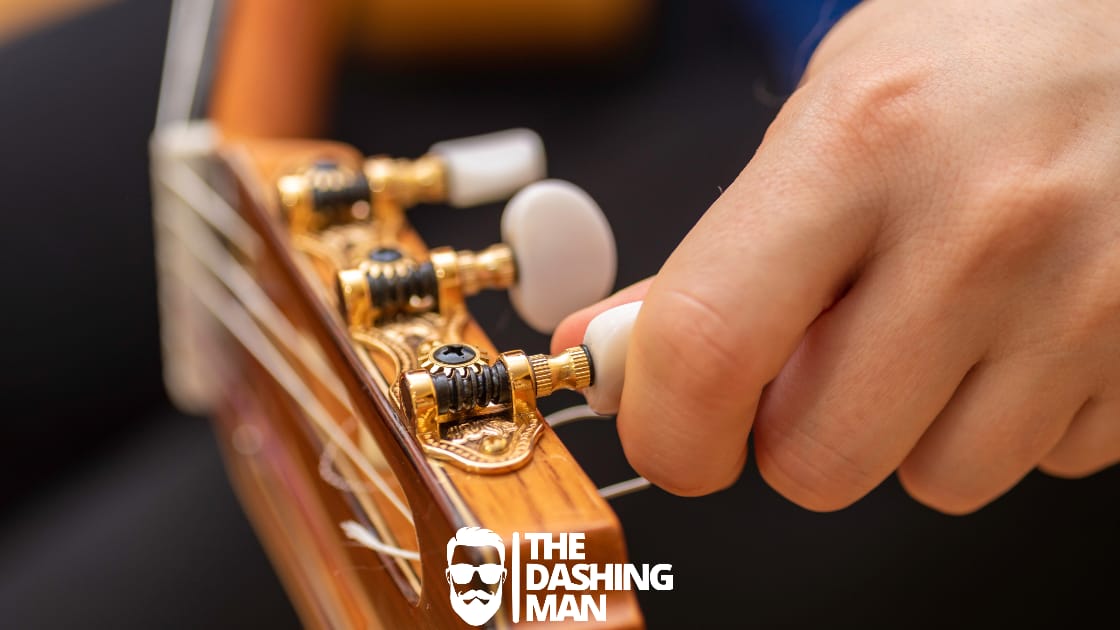Tuning the guitar is one of the most important skills for any guitarist to learn. Whether you’re a beginner or an experienced musician, having a properly tuned guitar is crucial to producing the best possible sound from your instrument. In this post, we’ll cover the basics of tuning the guitar, as well as some tips and tricks to help you get the most out of your practice sessions.
Understanding Guitar Tuning:
Before we dive into the specifics of tuning the guitar, it’s important to understand what tuning actually means. In short, tuning refers to the process of adjusting the tension of the strings on your guitar so that they produce the correct pitch when played. There are several different methods of tuning a guitar, but the most common is standard tuning, which is often referred to as EADGBE.


Standard Tuning
Standard tuning is the most common method of tuning a guitar, and it involves tuning the strings to the following pitches, from lowest to highest:
- E
- A
- D
- G
- B
- E
To tune your guitar in standard tuning, you can use a guitar tuner, which is a device that helps you to determine the correct pitch for each string. Alternatively, you can use a tuning fork or another instrument to tune your guitar by ear.
Alternate Tunings
In addition to standard tuning, there are many other types of tunings that you can use to achieve different sounds and styles of playing. Some common alternate tunings include drop D tuning, open G tuning, and DADGAD tuning. Each of these tunings has its own unique characteristics and can be used to create a wide variety of sounds and styles.


Tuning the Guitar: Step-by-Step
Now that you have a basic understanding of guitar tuning, let’s dive into the step-by-step process of tuning your guitar. Here’s what you’ll need:
- A guitar tuner
- Your guitar
Step 1: Get Your Tuner Ready
Start by turning on your guitar tuner and setting it to the correct mode for your guitar. Most tuners will have a setting for standard tuning, as well as several alternate tuning options.
Step 2: Tune the Low E String
Begin by plucking the lowest string on your guitar (the thickest one), which is tuned to E. Play the string and watch the tuner to see if the needle is indicating that the note is too high, too low, or just right. Adjust the tuning pegs on the headstock of your guitar until the tuner indicates that the note is perfectly in tune.
Step 3: Tune the A String
Next, pluck the A string, which is the second-lowest string on your guitar. Use the tuner to adjust the tuning pegs until the note is perfectly in tune.
Step 4: Tune the D String
Continue the process of tuning each string in order, moving up to the D string next. Pluck the D string and use the tuner to adjust the pitch until it is perfectly in tune.
Step 5: Tune the G String
Next up is the G string. Pluck the string and use the tuner to adjust the pitch until it is perfectly in tune.
Step 6: Tune the B String
After tuning the G string, move on to the B string. Pluck the string and use the tuner to adjust the pitch until it is perfectly in tune.
Step 7: Tune the High E String
Finally, tune the high E string, which is the thinnest and highest-pitched string on your guitar. Pluck the string and use the tuner to adjust the pitch until it is perfectly in tune.


Tips and Tricks for Tuning the Guitar
Now that you know the basics of tuning
the guitar, here are some tips and tricks to help you get the most out of your practice sessions:
- Use a Guitar Tuner App
In addition to using a physical guitar tuner, there are many free smartphone apps that can help you tune your guitar. These apps use your phone’s microphone to detect the pitch of each string and provide visual feedback to help you adjust the tuning pegs.
- Tune in Before Every Practice Session
It’s important to tune your guitar before every practice session to ensure that you’re playing in tune. Even if you haven’t touched your guitar since the last time you played, changes in temperature and humidity can cause the strings to go out of tune.
- Learn to Tune by Ear
While using a guitar tuner is the easiest and most accurate way to tune your guitar, it’s also important to learn how to tune it by ear. This skill will come in handy if you don’t have a tuner on hand or if your battery dies. Start by using a tuning fork or another instrument to get the correct pitch for each string, then adjust the tuning pegs until the strings match the pitch.
- Use the Fifth Fret Method
Another method for tuning your guitar by ear is the fifth fret method. This involves playing the fifth fret of one string and comparing it to the open string next to it. For example, if you play the fifth fret on the low E string, it should produce the same pitch as the open A string. Use this method to tune each string to the correct pitch.


Conclusion
Tuning the guitar is an essential skill for every guitarist to learn. Whether you’re a beginner or an experienced musician, having a properly tuned guitar is crucial to producing the best possible sound from your instrument. Use the step-by-step process outlined in this post, along with the tips and tricks provided, to improve your guitar tuning skills and take your playing to the next level.
If you liked this post, be sure to check out some of our related posts too!

